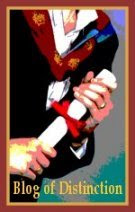
I’ve been thinking a lot this month about what it really means to be a canine naturalist. I cannot literally perceive the world as a dog would, so I must rely, instead, on preferences. When Ari finds something interesting, I need to stop and investigate it too. When she is repelled by something (which, admittedly, happens very rarely), my job is to determine why. An approximation of these value judgments is, I think, the closest I can get to seeing the natural world through a dog’s eyes. But even in this mitigated form, my project is a challenge. I’m still not sure I understand the rules of attraction for Ari. And try as I might, I cannot make myself embrace the idea of burying my nose in manure, nor can I relish a good roll on thawing muck.What it really comes down to, I think, is a divergence in natural values. Whether or not they are instinctual or learned, canines and humans clearly possess them. Greg’s and mine find their antecedent in classic western hierarchies, beginning with Aristotle’s academic classifications and continuing into contemporary cultural hierarchies.
Contemporary ethno-biologists now theorize that dogs create values in similar ways—at least insofar as achieving pleasure is concerned. As far as they know, this is not based on any sort of philosophical principle, but rather, something much closer to hedonism: if it feels good, do it; if it feels really good, do it some more. The question for me then, is this: why do some things provide great pleasure for Ari and not for me?
May is a good month to ask this question: at no time will Ari and I be so divided in our sense of what makes for naturalized recreation. This month is the height of mud season in New England: several weeks of rapid thaw that turns the entire landscape into brown ooze and makes simple tasks like walking to the mailbox a harrowing adventure. It’s no fun—at least for humans.
As for the dogs in the area, this time of year is just about perfect. My pup is no exception. Born and reared in the frozen landscape of winter, Ari has had no experience with wet, other than her water bowl and the much-feared hose at the shelter. Now, however, liquid is everywhere—and she can’t get enough.
On our first long walk of the month, the pup stops at a large puddle and cocks her head quizzically. This was a snowbank a few weeks ago, and she looks as if she’s not sure what to make of the transformation. Deciding it requires further investigation, she puts a tentative paw into the water. Unlike ice, it neither supports her weight nor cracks from the pressure. Instead, it yields, engulfing her paw until it hits the soft bottom below. This confuses her. She tries again, more cautiously this time. After a few tentative pokes, she begins to splash, pawing at both her reflection and whatever lies underneath the surface. As she does, she churns up decayed matter and sediment. She wades in a few more steps, eventually letting the water lap at her knees as she puts her snout into the puddle itself. She surfaces, clearing her airways in a hearty snort of slime, and smiles proudly. This is going to be great fun, she seems to say.
As the weeks progress, Ari becomes even more daring around liquid—she zigzags across the trail, seeking out puddles of all ilk. She stops at each one, pouncing madly upon it and grinning as the force of her paws is enough to send up a plume of water and sediment. By the middle of the month, my timid puppy has become a veritable daredevil when it comes to water and mud. No longer content with the tame little depressions on our path, she leaps from the trail, tripping over her hind legs and belly-flopping into any liquid body she can find. When she returns, she brings decaying leaves, soil, and all sorts of microbes embedded in her drenched coat.
Ari’s fur usually smells of cut hay—a little bit sweet, a little bit dusty. Now, however, she moves about in a cloud of noxious sulfur, which soon insinuates itself into my car, our carpets—even my clothes. By the middle of the month, I find myself yearning for the mere smell of decomposing leaves after Ari discovers a rotting snake carcass and insists upon rolling on it every time we get near. She moans with pleasure as she wriggles across the carcass and prances for the rest of the walk, clearly thrilled with the find. My moan of disgust does little to dissuade her. If anything, she looks at me with disappointment and maybe even a little pity. Don’t humans understand how great rotting snakes smell? No. Really no. And no some more.
Still, the thawing landscape has become an oasis for my otherwise-overwhelmed pup. This is particularly true in areas where puddles and ponds are exposed. While there, Ari loses sight of her anxiety and reluctance; in their place, I see pure carpe diem. Luckily for her, these mysterious pools are appearing everywhere. Nearly every step of our path is now flanked by a discrete body of water, and it appears as if our forest has assumed a distinctly Venetian quality. In the midst of it all, a gondola of a dog steers her way from pool to pool, her tail making a most peculiar ricciolo.
We adjust our daily schedule to accommodate this new routine, leaving for our walks earlier each day. I am learning that puddle exploration can not be rushed, and I become accustomed to waiting patiently on the trail, silently cringing as a soggy dog drops herself into the muck. Once home, we make time for baths, towel drying, and clean clothes.
As for our naturalism, I can not deny that the muck has provided the kick-start we need. On one late morning walk before my literature class, Ari hones in on movement in one of the smaller mud puddles—a frog! Enchanted, the pup pounces into the thick mire, sinking softly. The frog makes one last leap before burrowing into what looks like stagnant brownie batter. No problem, Ari seems to say. I’ll come along, too! She buries her snout deeper and deeper into the mud, plunging up to her ears and not caring that the gunk is oozing into her nose, her tear ducts, and beyond. When she surfaces for a breath, she is wearing blackface—an unknowing canine minstrel.
So entire is this carnival transformation, that when Ari spies herself in a mirror at home she barks furiously at this dark-faced puppy who has invaded our house. Hackles raised and teeth bared, she threatens the reflected pup. Get out, she snarls. This is my place. Her behavior strikes me as existentially astute. The woodland Ari is a different dog—chthonically bold, even Dionysian at times. Perhaps in the domestic light of our home, that seems offensive or inappropriate to her. She barks fiercely, snarling and snapping at the reflection. I crouch down next to her, pointing first to myself and then to her mirror image. We make eye contact in the glass.
Do you see? I ask her. This is me, and that is you. She raises her downfolded ear thoughtfully.
I believe she is considering my point. But before I can make any further philosophical leaps, she’s back to the furious barking—even louder this time—and not even a piece of leftover chicken can lure her away from this reflected intruder. It’s only after the mud dries, becoming translucent and revealing a scrap of her white blaze, that Ari concedes she may be barking at her own self. And by then, I’m more than late for class.


















0 comments:
Post a Comment